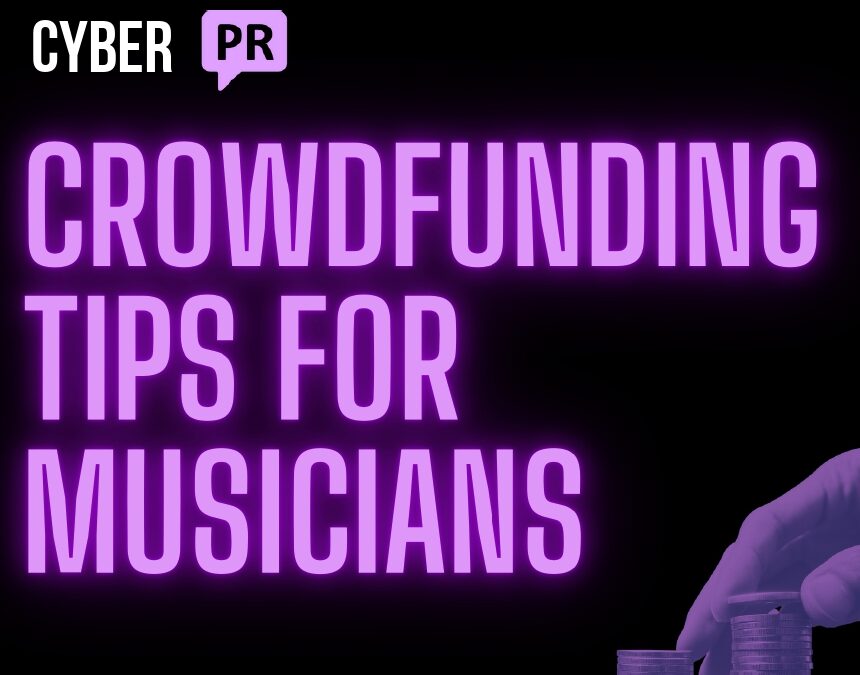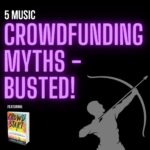Every great endeavor starts with a strong foundation. Crowdfunding is no different. In fact, it requires so much preparation that I wrote a whole book about crowdfunding called CROWDSTART. You can download a free chapter here if you’d like, and read on for some of my favorite tips on Crowdfunding.
Crowdfunding Campaigns
Planning is everything with crowdfunding: you must get a clear overview of the timeline for your project, choose the right platform, decide on an appropriate financial goal, and build the team you will need to support your efforts. This is exciting! But it’s also a time commitment and something you want to take seriously.
Choose the Right Crowdfunding Platform
As crowdfunding has become more popular, crowdfunding sites (targeting different audiences and needs) have proliferated, and many have come and gone over the last few years.
Today there are a handful of established crowdfunding platforms that remain the most reliable and respected. Not all platforms are created equal, and many have rules that are not obvious. I highly suggest that you work with a platform that allows you to keep a partial amount of the money you raise as opposed to a “you get all or nothing” approach (like Kickstarter).
Why? Because crowdfunding requires a lot of work, and to do all of this work for nothing is crazy! However, if you are the go-for-broke type, or you have a project that requires 100% for even a partial delivery, this may be the route you choose. I will leave this decision up to you.
Kickstarter
This is arguably the most recognized platform in the crowdfunding space. Kickstarter is open to art, design, fashion, film, tech, music projects, and more. Kickstarter is known for quite a few record-breaking campaigns, including Amanda Palmer’s album-focused campaign.
Kickstarter takes 5% of all the money raised in a successful campaign, plus 3% and $0.20 per pledge for payment processing. For pledges under $10, there is a discounted rate of 5% plus $0.05 per pledge.
Indiegogo
Projects on Indiegogo range from education to technology to arts to community. With Indiegogo, if you want to raise money for charity, you can register your campaign as a nonprofit.
Indiegogo charges a 5% fee on all campaigns. You pay 3-5% credit card processing fees per donation for any money collected.
This is a great option for indie artists and by far one of the most popular.
Building Your Crowdfunding Team
I highly discourage you from taking on crowdfunding by yourself. Like all things in the music industry, it’s better (and usually more successful) with a team.
This is a process that can be emotionally draining and quite complicated to manage alone. You’ll need the team as much for emotional support as anything. Even if you are a lone wolf artist who likes to create with no additional input, I strongly urge you to change your mindset when it comes to your campaign. The most successful campaigns are well planned and have a team behind them.
Generating PR For Your Crowdfunding Campaign
Also, know that if you want PR for your crowdfunding campaign that will take a whole separate strategy.
This is something I highly encourage — asking friends, family, or even superfans for their support is one thing, but a lot of artists tend to freeze when it comes to asking fans or even strangers. A well executed PR campaign can help you reach an entirely new audience, not to mention drum up interest and perceived value for your existing fanbase. When they see you posting that blogs or podcasts have shared your campaign, it gives it a validation that helps them feel more confident in donating their own money.
Continuum Programs — IE Memberships
If a crowdfunding campaign is not for you due to the intense amount of pressure to deliver in a finite amount of time or if you have already run a crowdfunding campaign and you want to generate a steady income, you may want to consider a Continuum Program. This is an offer to get your fans to buy from you on a regular basis.
The concept is simple: Entice your fans so they will give you money on a consistent basis. But remember, you can only do this after they have begun to engage with you and they trust you. Remember the Columbia Records program from back in the day? Their concept was simple: Give the music-lover customer a LOT of value (12 cassettes for $1); then offer them albums they will like based on their tastes for a monthly premium.
With that in mind, what can you offer your fans on an ongoing basis that will get them to buy? Again, superfans might be inclined to support you just because, but what about those more ambient fans?
Note: this does not have to be an every-single-month offering: It can be four times a year – the concept here is consistency!
Patreon
There are three platforms I suggest for helping to create Continuum offers. Patreon will allow you to receive income you can depend on. Whether it’s per month or per creation, such as single, EP, or video, you patrons can give you the consistent support by pledging a monthly or per project payment. Patreon is not only a payment platform, it’s also a platform for you to engage with the fans who care about you the most. Patrons can comment on the work you’ve shared and you can interact and engage with your biggest fans and supporters.
Check out some Patreon success stories for inspiration.
Volume.com’s Fan Club
Volume Is a newcomer to the fan club sphere but they’ve made it really easy to build a fanbase through live events and offer special perks for your fans, so that you can generate extra money each month. All you have to do is sign up for a Volume account and from there you can set up a Fan Club account and start earning money.
Bandcamp’s Subscription Service
Bandcamp also has a great tool that allows you to create your own subscription service. For a monthly or annual fee (your choice) your fans not only get the satisfaction of knowing they’re supporting you, and they get all the new music or shows you make, streaming instantly to their mobile devices. There are also live show / ticket options and you also get a portal where you can access to your subscriber community, where you can post messages, photos and video, and converse with your paying supporters!
I hope that this allows you to generate more income. You deserve it!
All of this can be found in my book CROWDSTART, which is available on Amazon, or grab a free chapter here:













Trackbacks/Pingbacks